
Let’s see: Green is the new black. Green is the new red, white, and blue. And green is the new green, or at least a new means of getting people to plunk down more of it. To some, the “green consumer” is an oxymoron (they might even drop the “oxy”). The real solution, they say, is to consume less. While there’s some truth to this, a Walden-or-bust approach seems ill-suited to our present culture. Greed and vanity are alive and well; if they can be enlisted in the fight to save the planet, who are we to turn them away? With green-hype alert levels recently upgraded to orange, skepticism is warranted; here, our fictional sparring partners examine some well-intentioned products that mainly serve the buyers’ self-esteem, and others that have unsuspected depths.
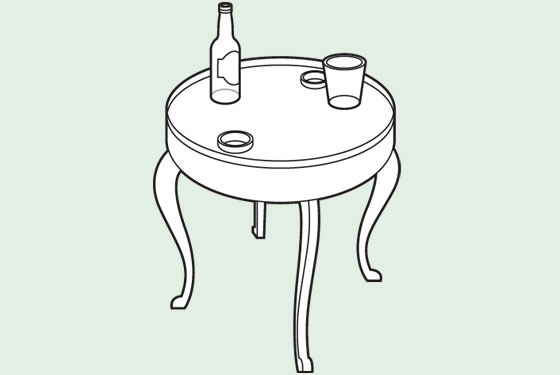
1. OIL-DRUM COFFEE TABLE
Check this out: a coffee table made from an oil drum.
The perfect home accent for an Earth lover!
Correct: an oil drum that won’t litter the landscape.
It should litter my living room instead? Better to melt it down with the other scrap metal and make it into something useful, like whistles for EPA employees. Look, there’s plenty of demand for scrap steel: In fact, 88% of all new steel products in the U.S. get recycled, which typically gives an energy savings of 74%.
Yeah, but with this table the energy savings is closer to 100%.
You’re missing a key point: Nobody needs a steel coffee table—I mean, unless they really go overboard on the Helmut Newton books.
Okay, maybe it’s not all that practical. But it’s a symbol of your commitment to…
To showing off my commitment?
VERDICT: Buy a nicer table for half the price and put the savings into carbon offsets.
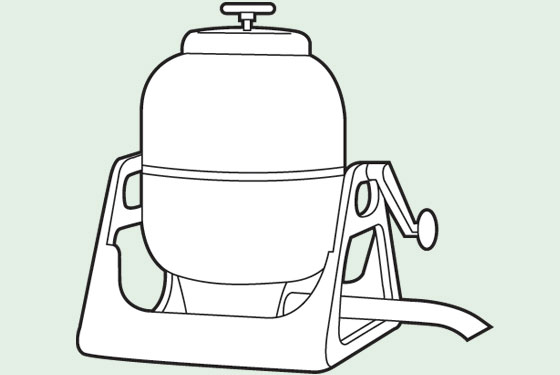
2. HAND-CRANK WASHING MACHINE
Here’s a slam dunk: a miniwasher that uses elbow grease instead of electricity to clean your clothes.
I can’t really be objective about this one.
Why not?
Because I’ve actually used this machine. And it made me want to slam-dunk the inventor’s head in the nearest pond.
But it takes only one or two minutes to do a load!
Sure, if you only count the time it takes to turn the crank—not the time it takes to measure the water, fill the gizmo, fuss with the cap, crank it, tip the sudsy water out, add more water, and repeat until the water runs clear.
But it uses less water and less detergent!
Only because it’s doing an itty-bitty load.
But it uses no electricity!
Neither does hand-washing in the sink. Besides, I can save more electricity by changing two of my light bulbs to compact fluorescents.
That reminds me: How many environmentalists does it take…
Skip it.
VERDICT: Washout.
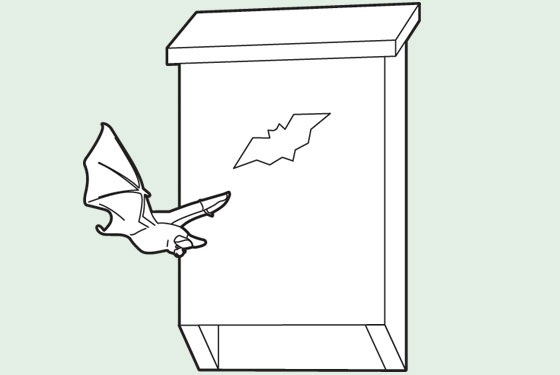
3. BAT HOUSE
Bat houses attract bats, bats eat mosquitoes. Instead of spraying your garden with malathion and your toddler with DEET, why not put up a bat house?
Because I don’t want to live on the set of Nosferatu. Bats are just bigger, thirstier mosquitoes.
Not unless you’re in the tropics of the Western Hemisphere, to which vampire bats are confined.
Okay, but they’re still creepy, and maybe rabid.
Human deaths from rabies in the U.S. average less than five per year, compared to around 170 from mosquito-borne diseases. A single bat can eat 1,200 mosquitoes in an hour.
Only if there’s nothing else on the tapas menu. In real life, there are beetles, moths, and other things that give a bigger bang for the swoop. One study of bat poop found that mosquitoes made up less than 2% of their diet. Bats won’t solve my skeeter problem.
Maybe not, but they can’t hurt.
VERDICT: Thumbs down for mosquito control, thumbs up for helping an imperiled genus. Fortunately, we have two thumbs.

4. POOP STATIONERY
In Sri Lanka elephants are in peril. Villagers shoot them because they trample their crops, which have encroached on the elephants’ natural stomping grounds.
Not much I can do about that.
You could use stationery made from elephant poop.
Does it smell?
It’s just like any crafty sort of paper, the imperceptible difference being that the raw fiber comes from pachyderms, who, from the point of view of the locals, are transformed from vandals into the geese who lay the golden eggs.
Is this really going to make much of a dent in the problem, given that killing elephants already carries the death penalty in Sri Lanka? Or is it just a way of showing my correspondents that I give a—
Even if it’s a small dent, it’s worth making. After all, elephants are highly intelligent: Some of them even recognize themselves.
I bet they feel bad about their necks.
VERDICT: The least you can do for the greatest of our four-legged friends.
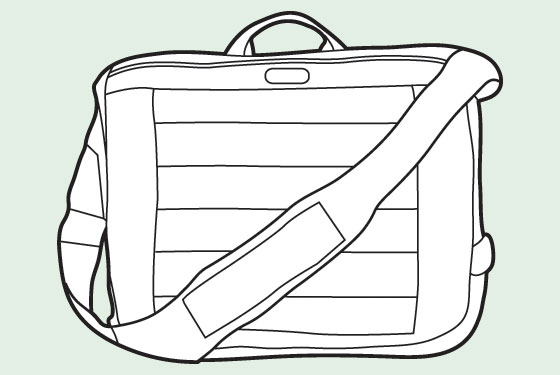
5. SOLAR-POWERED BAG
Wouldn’t you like to carry around your own renewable energy source?
Sure, should I carry a windmill?
I was thinking of something less quixotic: a laptop bag with solar panels.
You mean I can recharge my laptop on the go?
Actually, this is more for iPods, cell phones, BlackBerries, stuff like that. It only takes one or two hours to charge those.
Let’s play a game. You tell me who could possibly have a use for this product, and I’ll tell you why they don’t.
Busy city people—
Can charge their gadgets at night.
Travelers—
Can charge in the car, train, or plane.
Backpackers—
this isn’t a backpack.
No, but the company makes solar backpacks, too. And a solar beach bag. How about bicycle messengers who are outdoors and use their cell phones all day?
All right, though they won’t like hefting the extra 2.5 pounds, not counting the adapter.
VERDICT: By all means, buy it. And while you’re out, can you run this envelope to 53rd and Lex?

6. SOY CLOTHING
Remember when you could put on a garment labeled “100% cotton” and feel like Henry Frigging Thoreau? Now, of course, we know that cotton is evil: the most poison-intensive crop on the planet.
That’s why I try to buy organic cotton.
Not good enough.
Between 840 and 3,500 gallons of water are used to grow a pound of cotton, even the organic kind. So what do you want me to do—go naked?
Go soy.
You want me to wear tofu.
A tofu by-product, to be exact. They take the dregs of tofu and soybean-oil processing, add polymers, and voilà.
Isn’t there a fair amount of energy involved?
Well, yes, but since the stock fiber is soy waste, you can discount the energy used in growing it. And think how tasty you’d look in this clingy tangerine hoodie.
Feels nice. It’s really soy?
A blend: 47% soy, 47% cotton, 6% spandex.
What, no duck sauce?
VERDICT: As long as you’re in the dressing room, you might try on something in hemp or bamboo, too.
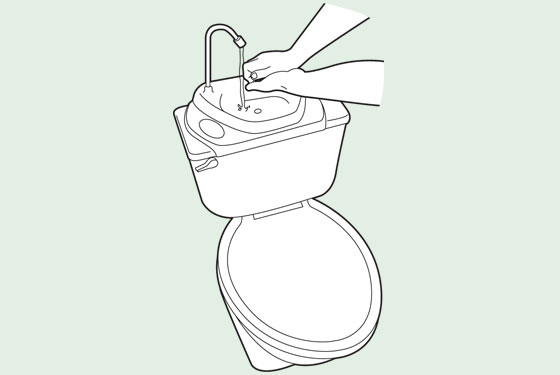
7. TOILET-TOP SINK
Each year—
I feel a statistic coming on
— Americans flush down their toilets 12 trillion gallons of water, almost enough to fill Lake Champlain twice.
What do you want me to do, swim in it—before it gets to the bowl?
I want you to wash your hands in it—before it gets to the bowl. Neat trick.
Which you can pull off by installing the SinkPositive on top of your tank. It diverts the water from the intake hose, runs it through a faucet, and drains it into the tank.
That’s cold water, not very sanitary.
The SinkPositive isn’t meant to replace your sink. But it’s fine for a post-No. 1 rinse.
If I want to save water I can stick a brick in the tank.
Why not do both? Plus, if you’ve got a leak, you’ll see it. Which is no trifle, given that U.S. toilets leak 5 trillion gallons a year—roughly three months’ flow over Niagara Falls.
Is this a great country, or what?
VERDICT: If it fits, install it. Better still, replace your old water-guzzler with a new, efficient model that doesn’t make you flush twice.
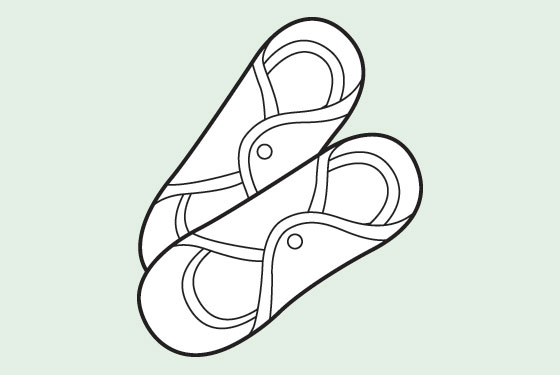
8. WASHABLE MENSTRUAL PADS
If you’re typical (and a woman), you will dispose of about 10,000 pads and tampons before the hot flashes hit. Why not switch to washable pads?
I use a lot of toilet paper, too, but I’m not about to hang it out to dry.
Fifteen billion pads and tampons a year is a lot of landfill.
At a third of an ounce per pad, it’s a mere 404 million pounds a year, out of a total solid-waste burden of 496 billion pounds.
What about the tens of thousands of applicators that litter our beaches each year or the dioxin used to bleach and soften the fibers? What about toxic-shock syndrome? The healthiest thing for your body and the environment is this diaphragm-like thingie. You can wear it all day, empty in the toilet—
Yeah, and rinse it out in the sink next to your boss while she fixes her mascara?
You can wait till you get home.
I can’t believe we’re having this conversation.
VERDICT: A personal matter. But the cup thing kind of makes sense if you can get over the gross-out factor.

9. BAG DRYER
Admit it: You’ve always longed for an easy way to dry plastic bags after you wash them.
Actually, I haven’t.
You don’t mean to say you just toss them after a single use?
Plastic bags make up a tiny fraction of the volume of landfills. And landfills are hardly our biggest ecological problem anyway.
You must know that the big reason for reuse and recycling isn’t to reduce solid waste—it’s to reduce energy use.
What about the energy you’re using to heat water to wash the bags?
I use cold water, and I just wash the ones with crumbs, I throw away the greasy ones.
You know, you’ve won me over. I was going to say this is just another stupid, overspecialized contraption that’s going to end up clogging a landfill somewhere, but I was wrong. Because, you know, it would be really great for drying condoms, too.
Very funny.
See? Everyone draws the line somewhere.
VERDICT: If you’re seriously considering this item, you have too much time on your hands. Go canvas for Greenpeace instead.
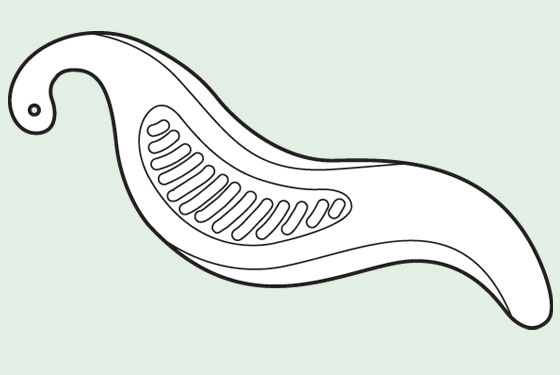
10. SQUEEGEE FOR THE BODY
What could be more brilliantly simple than this? A squeegee for the body: You flick off the water after showering, and your towel gets less wet, mildews less, and needs less washing.
Simply brilliant. And think of the possibilities: It’s raining, you’re soaked to the skin, you stop at a crosswalk, and some guy in a hooded sweatshirt whips this thing out …
Seriously, I tried this gizmo. It works. Just think of the water savings: an ounce flicked in time saves gallons down the line.
Thanks, but I’ve already got a product that does the same thing. It’s all-natural, 100 percent recyclable, feels much nicer than plastic, and there’s no danger of my leaving it in a hotel bathroom.
What is it? I’ll ask the New York intern to order one!
My hand.
VERDICT: The proliferation of absurdly specialized and redundant tools is not our idea of green.

11. CARBON-NEUTRAL WEDDING
Will you marry me?
No.
But think of the glamorous, carbon-neutral wedding we could have! For just $260, we can offset the carbon emissions of 250 guests, with little signs for every table informing them that—
I get it. Never mind the Humvee limo and Chilean sea bass—we just pay someone else to be green for us.
Beneath that cynical veneer, you’re a moralist, aren’t you? Not me. A pound of CO2 saved is a pound of CO2, period.
Come on—the voluntary offset biz is an unregulated mess. You’re probably paying for tree plantations that will burn down next week.
As it happens, we’ll be helping U.S. farms capture methane—a greenhouse gas 21 times nastier than CO2—and turn it into power. And DrivingGreen is recommended by the Environmental Defense Fund.
Okay, okay. But ix-nay on the table signage.
Darling! You mean … you will?
VERDICT: You can’t buy your way out of life’s complicity. But if you’re already walking the walk, offsets soften your footprint.
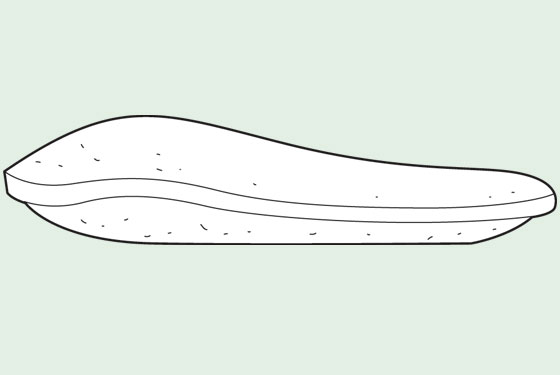
12. RECYCLED COFFIN
Each year, 2.4 million Americans die …
Oh, my God! Of what?
Of everything. And then we bury them in more than 30 million board feet of wood, including tropical hardwoods and toxic-laced particle board.
So what do you want me to do?
Choose an elegant, papier-mâché pod made of 100% recycled newsprint and nontoxic glue, covered with gold leaf or handmade paper. Have it lined with feathers.
I’m ticklish. Besides, wouldn’t a shroud be simpler? No state law requires a box, or even a pod.
Do you want the worms going in quite that quickly?
But what about the 827,060 gallons of embalming fluid we bury each year—a potential carcinogen that can seep into groundwater?
To avoid that, you’ll need to find a chemical-free “memorial nature park.” Contact the Green Burial Council or the North American Woodland Burial Society.
Don’t rush me.
VERDICT: It’s your last judgment. Make it yourself.